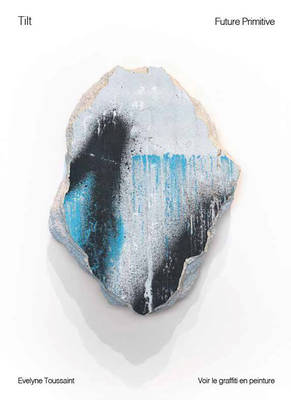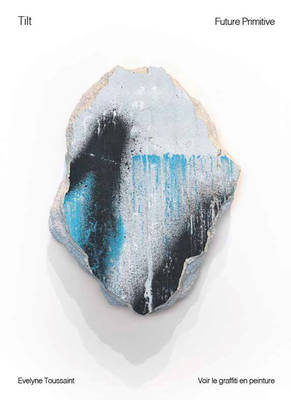
Bedankt voor het vertrouwen het afgelopen jaar! Om jou te bedanken bieden we GRATIS verzending (in België) aan op alles gedurende de hele maand januari.
- Afhalen na 1 uur in een winkel met voorraad
- In januari gratis thuislevering in België
- Ruim aanbod met 7 miljoen producten
Bedankt voor het vertrouwen het afgelopen jaar! Om jou te bedanken bieden we GRATIS verzending (in België) aan op alles gedurende de hele maand januari.
- Afhalen na 1 uur in een winkel met voorraad
- In januari gratis thuislevering in België
- Ruim aanbod met 7 miljoen producten
Zoeken
Omschrijving
Between painting and writing
Graffiti is like art: everyone thinks they know what it is, but things get complicated if you try to give a precise explanation. This book will trace a history of the art of graffiti through the evolution of Tilt's work. Graffiti writing, which is based on drawn and painted letters, is a movement many of today's graffiti artists - Tilt included - claim to be part of when they want to highlight their own singularity and resist the "street-art turn" of the visual artworks currently produced in public space.
The artist painted his first tag as "Tilt" in 1990. He knew from then on that graffiti would be a lifelong passion. Graffiti conveys a libertarian, if not anarchistic and invasive, relationship with the city, against architectural and urban authoritarianism, the pervasiveness of advertising, and disfigured blocks. As far as Tilt is concerned, the content does not necessarily have to bear any explicit political message: the gesture itself embodies an activist form of intervention on the territory. From 2016 on, Tilt has been recreating a series of abstractions in his studio. His recent artwork tell its own story, just as strikingly surprising as a piece of graffiti you would happen to see in the city, they are both inscribed in the subversive origins of graffiti and in the history of painting. Whether it be vandalistic-in the streets, where it belongs to everybody - or a decorative object - as the first writers to enter New York City's art galleries as early as the 1970s had decided - graffiti is an ongoing story to tell - or rather, to write…
Graffiti is like art: everyone thinks they know what it is, but things get complicated if you try to give a precise explanation. This book will trace a history of the art of graffiti through the evolution of Tilt's work. Graffiti writing, which is based on drawn and painted letters, is a movement many of today's graffiti artists - Tilt included - claim to be part of when they want to highlight their own singularity and resist the "street-art turn" of the visual artworks currently produced in public space.
The artist painted his first tag as "Tilt" in 1990. He knew from then on that graffiti would be a lifelong passion. Graffiti conveys a libertarian, if not anarchistic and invasive, relationship with the city, against architectural and urban authoritarianism, the pervasiveness of advertising, and disfigured blocks. As far as Tilt is concerned, the content does not necessarily have to bear any explicit political message: the gesture itself embodies an activist form of intervention on the territory. From 2016 on, Tilt has been recreating a series of abstractions in his studio. His recent artwork tell its own story, just as strikingly surprising as a piece of graffiti you would happen to see in the city, they are both inscribed in the subversive origins of graffiti and in the history of painting. Whether it be vandalistic-in the streets, where it belongs to everybody - or a decorative object - as the first writers to enter New York City's art galleries as early as the 1970s had decided - graffiti is an ongoing story to tell - or rather, to write…
Specificaties
Betrokkenen
- Auteur(s):
- Vertaler(s):
- Uitgeverij:
Inhoud
- Aantal bladzijden:
- 368
- Taal:
- Engels
Eigenschappen
- Productcode (EAN):
- 9782370741844
- Verschijningsdatum:
- 29/09/2022
- Uitvoering:
- Paperback
- Afmetingen:
- 303 mm x 228 mm
- Gewicht:
- 1922 g

Alleen bij Standaard Boekhandel
+ 110 punten op je klantenkaart van Standaard Boekhandel
Beoordelingen
We publiceren alleen reviews die voldoen aan de voorwaarden voor reviews. Bekijk onze voorwaarden voor reviews.









